Blog
How does truck sag affect my vehicle?
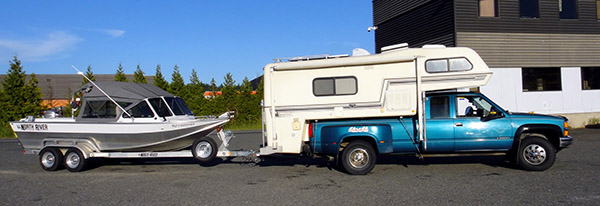 Rear end truck sag from towing or hauling
Rear end truck sag from towing or hauling
Has the term ‘sagging’ ever been associated with something positive? If your truck or vehicle displays rear end sag when towing a trailer or hauling a heavy load, it’s important to address the rear end sag by finding a proper solution that levels the vehicle. Truck sag, also referred to as truck squat, is the visible effect of payload on the rear end axle, causing the nose of the vehicle to shoot upwards while the back end tilts downward. Some folks underestimate the severity of driving a vehicle in this position. The handling dynamic of your vehicle will suffer greatly.
With rear end sag, you’ll experience these side effects: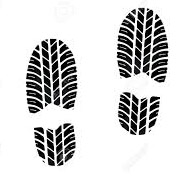 Uneven tire footprint
Uneven tire footprint
- Increased braking distance, inability to stop
- Steering is completely thrown off -- steering is loose or has a feeling of ‘floating’ because the vehicle’s maneuvering capabilities are unresponsive
- Misaligned steering leads to increased tire wear and uneven tire footprint, which can potentially decrease your fuel mileage
 Inability to gain controlWhen you’re driving with vehicle sag, you’ll likely stress to focus your mind and keep the vehicle in its lane on the road, often overcompensating with corrective steering because it’s significantly altered. It’s unsafe and difficult to gain control of a vehicle when operating under these conditions.
Inability to gain controlWhen you’re driving with vehicle sag, you’ll likely stress to focus your mind and keep the vehicle in its lane on the road, often overcompensating with corrective steering because it’s significantly altered. It’s unsafe and difficult to gain control of a vehicle when operating under these conditions.
We introduced the StableLoad Challenge at a camping rally to those who tow or haul often. By placing 2,800-pound load in the back of two identical Ford F150 trucks, we had test-drivers experience the suspension of both vehicles, one with the StableLoad suspension stabilizer turned on, the other without.
We parked the trucks side by side as we gathered test-drivers at the rally. Before anyone even drove the vehicles, rally-goers could physically see the difference between the trucks by the amount of sag. The Ford truck without the StableLoads suspension stabilizer had rear end sag while the Ford truck with StableLoads installed sat level.
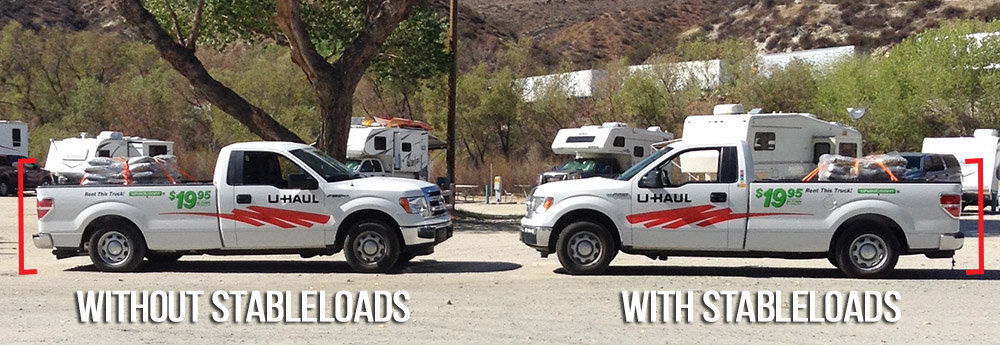 Truck comparison on Ford F150 truck during the StableLoad Challenge
Truck comparison on Ford F150 truck during the StableLoad Challenge
How does the lower quick-disconnect StableLoad application correct rear end sag? The StableLoads effectively reduce the amount of rear end sag by pre-activating the vehicle’s factory overload leaf springs. Not only for trucks, the StableLoads universally fit on any truck, van, SUV and light commercial vehicles that come equipped with overload leaf springs.
By occupying the gap between the leaf spring pack and lower overload, the stabilizing effect of the leaf springs are activated much sooner. With the factory suspension put to use as it’s designed, you experience a leveled vehicle and reduction in stressful handling characteristics such as side-to-side sway, body roll and porpoising.
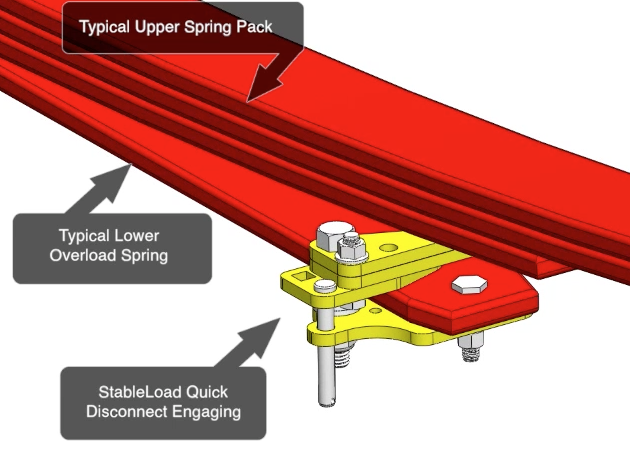
The condition of leaf springs is different on each vehicle, meaning the space or clearance between the upper leaf spring pack and lower overload leaf spring varies. Each StableLoad comes with three specially designed wedges that are adjustable to accommodate this.
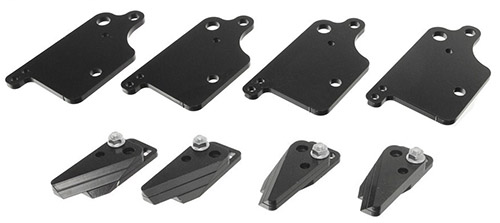 Lower Quick Disconnect StableLoad KitThe wedge plates are able to be removed one at a time (as needed) to accommodate applications where the space between the lower overload and main spring pack are limited. Each individual wedge plate is 1/4 inch thick and has special tapered edges built in. The more spacers or wedges that fit into the gap increase the level of effectiveness. However, if only one or two of the wedges are used, the stabilizing effects of the quick disconnect StableLoad are still noticeable.
Lower Quick Disconnect StableLoad KitThe wedge plates are able to be removed one at a time (as needed) to accommodate applications where the space between the lower overload and main spring pack are limited. Each individual wedge plate is 1/4 inch thick and has special tapered edges built in. The more spacers or wedges that fit into the gap increase the level of effectiveness. However, if only one or two of the wedges are used, the stabilizing effects of the quick disconnect StableLoad are still noticeable.
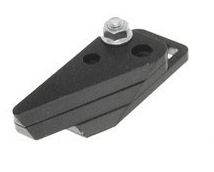 Lower StableLoad wedge pack
Lower StableLoad wedge pack
with 3 wedges The wedge pack easily rotates into position when towing or hauling, much like an on and off switch for your suspension. With the ability to engage and disengage, the StableLoads allow the convenience of returning to your comfortable factory ride when you’re not towing or hauling.
Those who took the StableLoad Challenge were amazed at how StableLoads helped eliminate truck squat. When rally-goer Paul Bechtel test-drove the Ford F-150 truck with StableLoads turned on, he felt the difference in handling immediately.

“Wow, what a difference,” said Bechtel. “I have a lot more control. The ride is very smooth and porpoising is reduced.”
See the entire StableLoad Challenge by watching the full video:
Click here to learn more about the StableLoad suspension stabilizer.
When you subscribe to the blog, we will send you an e-mail when there are new updates on the site so you wouldn't miss them.

